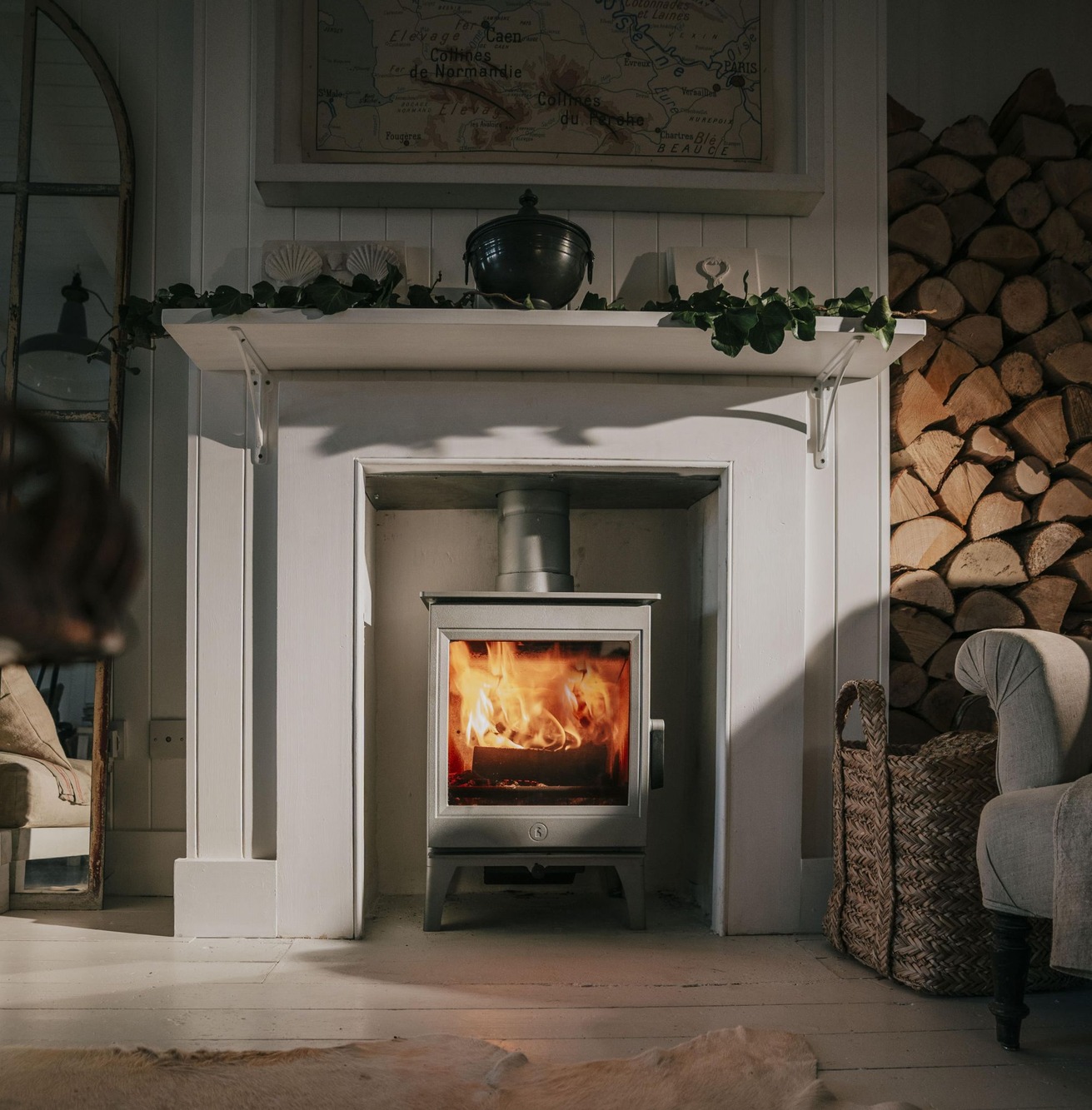Multi-fuel stoves offer the flexibility to burn a variety of fuels, including wood, smokeless fuels and briquettes, and are popular heating appliances thanks to their versatility and efficiency. To optimise their performance and ensure clean combustion, multi-fuel stoves use air vents that regulate the air supply.
What are Stove Air Vents?
Stove air vents, also known as air inlets or dampers, are openings built into the structure of a multi-fuel stove that allows controlled amounts of air into the combustion chamber. These vents facilitate the incineration process by regulating the oxygen supply, ensuring an efficient and controlled burn.
At Charnwood we have incorporated a single air control on all our multi-fuel stoves that simplify the burning process so you don’t need be concerned about adjusting numerous controls. Just pull out to burn harder or push in to slow the burn down.
How Do Stove Air Vents Work?
As you know, a fire needs three things to survive: fuel, heat and oxygen; this is often referred to as the “fire triangle”. Stove air vents control how much air (and subsequently, oxygen) gets to the fire. When starting a fire, you want as much oxygen as possible so the fire can light. Once the fire is self-sustaining, you want to reduce the amount of oxygen for a steady and more efficient burn.
Air Supplies in Stoves
The air supplies in stoves are categorised into three main types: primary, secondary, and tertiary air supplies. On a Charnwood stove all three vents are incorporated into an air box that is fitted to the base of the stove and controlled by one slider.
Primary Air Supply
The primary air supply is the main source of oxygen for initial combustion and it is typically regulated by a primary air vent at the stove’s base or front. Controlling the primary air supply allows users to ignite and establish a fire. Adjusting this vent allows users to increase or reduce the amount of oxygen available to the fire, influencing the burn rate and heat output.
Secondary Air Supply
Once the fire is established, secondary air becomes essential for complete combustion. The secondary air vents are strategically placed in the upper part or sides of the stove to introduce fresh, pre-heated air into the combustion chamber above the fuel bed. This additional oxygen helps burn off any unburned gases, reducing emissions and promoting a cleaner, more efficient burn.
Tertiary Air Supply
The tertiary air supply is an advanced feature found in all our multi-fuel stoves; it introduces a controlled amount of air into the flue gases. The tertiary air vents are once again incorporated into the airbox and are designed to inject air into the path of the exhaust gases. This additional oxygen promotes the secondary combustion of any remaining gases, increasing efficiency and reducing particulate emissions.
How to Use Stove Air Vents
Step 1: Preparing your stove
Before starting a fire in your stove, it is essential to check that your air control is pulled out fully – this allows for a sufficient supply of oxygen to ignite and establish the fire.
Step 2: Starting your fire
Once you have added kindling and are ready to light the fire, ignite the kindling as you would normally. It is important to leave the control fully open during this stage. The unrestricted flow of oxygen will facilitate the ignition and rapid development of the fire. Allow the kindling to burn until it has taken hold and is burning steadily.
Step 3: Closing your vents
As the fire takes hold of the kindling and starts burning steadily, it is time to add some larger wood and start adjusting the control. Begin by gradually closing the primary air vent by pushing in the button. By reducing the primary air supply, you control the amount of oxygen reaching the fire, regulating the burn rate and heat output. Monitor the fire closely and make incremental adjustments to the control until you achieve a desired balance between heat production and fuel consumption.
Step 4: Adjusting your vents
As the fire spreads beyond the initial kindling and begins burning the wood, you can fine-tune the heat output by adjusting the single control further. Increasing the secondary air supply promotes combustion, reducing emissions and increasing efficiency. Adjust the control to find the optimal balance that provides sufficient oxygen for clean burning while maintaining the desired heat output.
Explore our types of firewood here.
Why Choose Us?
Charnwood has been committed to providing quality wood-burning stoves since 1972 and we know all there is to know about wood burners, and how to get the most out of the wood you burn. If you have any questions about heating your home with a wood-burning stove, please get in touch.

